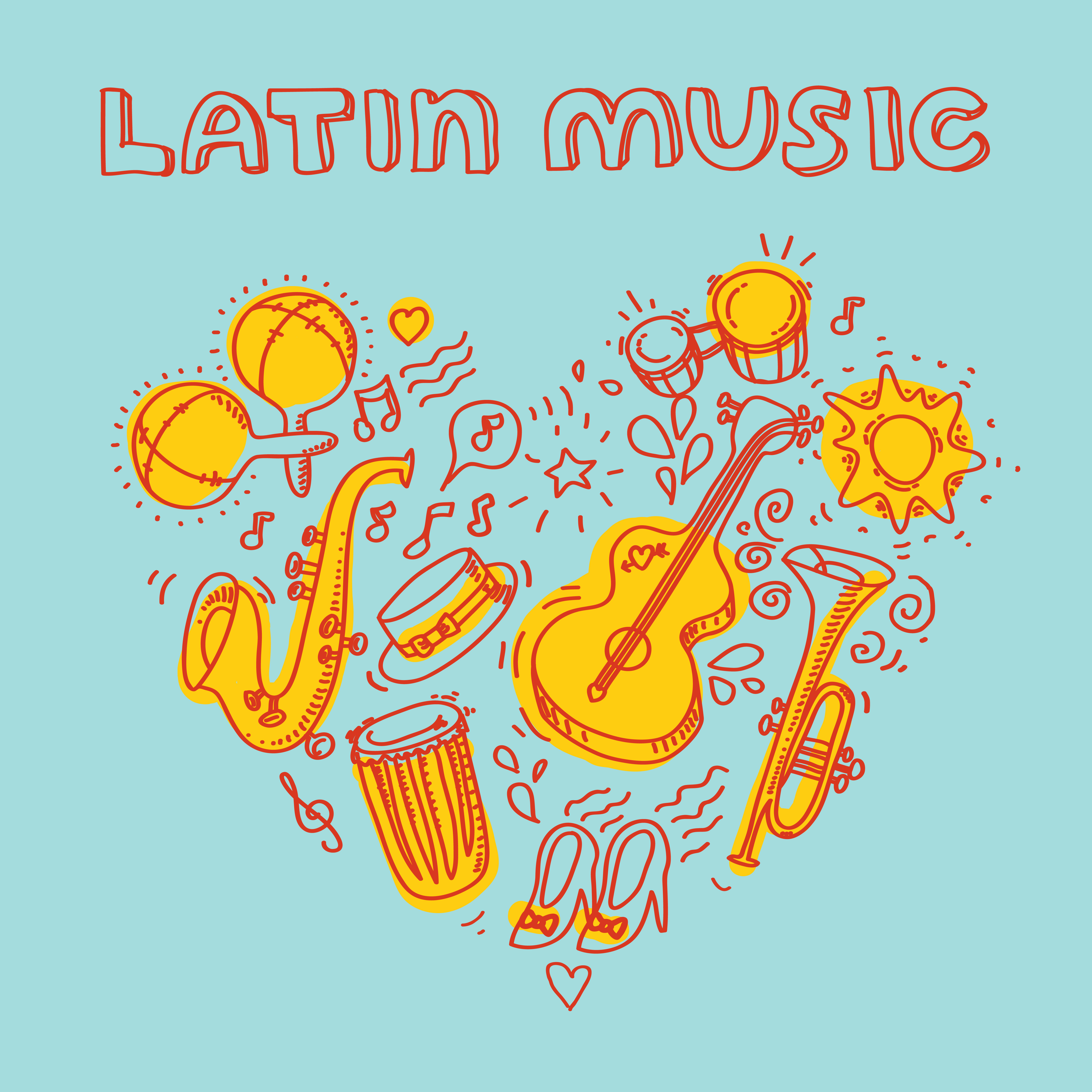
Its slow tempo and steady 4/4 metre mean that cha-cha-chá is often the logical first step not only for drummers looking to adapt Latin rhythms to the drum kit, but also for beginner percussionists.
However, as with any style of music, if we want to play cha-cha-chá authentically, we must have a good grounding in its history and background rather than just learning the rhythms themselves.
This article will cover some of that history while giving an insight into the styles that preceded cha-cha-chá, as well as recommending some important bands or musicians who played a key role in the development of the style.
Danzón
Prior to the emergence of cha-cha-chá, another style was popular in Cuba, it was called danzón. Danzón became prevalent in Cuba in the mid 1800s and is believed to have evolved from the habanera (translated literally as the “Havana dance”). Early danzón music was played by orquestas tipicas featuring brass and woodwind instruments as well as timpani. Later on however, the emergence of the charanga (an ensemble featuring violins, flute, and the iconic Cuban timbal drums) changed the sound of danzón and later lead to the emergence of cha-cha-chá music. An example of an early danzón composition is “Las Alturas de Simpson” by Miguel Faílde. Faílde was an important figure in the development of danzón music and first performed “Las Alturas de Simpson” in 1879 in Matanzas. Listen to the version by La Orquesta Folklórica Nacional de Cuba (available on Spotify) for a reference to this composition. You’ll notice that the melody is played by both the violins and the horns. There are no vocals in this composition, but in later danzón music the vocalist would play the main melody while the flute and horns play countermelodies. The violins would play a montuno (syncopated arpeggio), a role which is usually taken by a piano or tres (Cuban stringed instrument with 3 pairs of strings) in modern danzón music. The most recognisable rhythmic feature of danzón music is perhaps the baquateo pattern played by the timbales.
While the clave isn’t traditionally played in danzón music, the baqueteo is a rhythm which undoubtedly fits the clave concept. If we view the baqueteo together with the 3:2 son clave, we can clearly see that the rhythm played in the first bar (usually referred to as the cinquillo) is linked to the 3 side of the clave, while the second clearly outlines the 2 side.
Danzón music is structured to accommodate the dancers for whom it is played and in more traditional manifestations of the style, the below structure would be played with little or no variation. Next to each section I have outlined what a timbalero (timbales player) would typically play.
- Intro - 4 bars of baqueteo pattern in timbales, often ending with a stop in the 4th bar.
- Paseo - 4 bars of cinquillo rhythm (3 side of baqeteo pattern). The paseo usually ends with a stop on beat 1 of the final bar.
- 1st Melody - 16 bars of baqueteo usually ending with some arranged hits in the last bar or two.
- Intro reprise - same as intro.
- Paseo reprise - same as first paseo.
- 2nd melody - again 16 bars of baqueteo with a different melody.
The Charanga
As previously mentioned, in its early years danzón music had been played by European classical instruments such as flutes, trumpets, and timpani. These instruments were remnants of Spanish colonialism in Cuba that only ended when the Spanish withdrew from the island in 1898, though this was followed by another three years of United States rule. As Cuba began to establish its own cultural identity free from colonial influences, son and rumba music began to flourish and the ensembles playing music such as danzón began to evolve. The brass heavy orquesta tipica was replaced by the more elegant charanga bands. This is most clear when we examine the evolution of the European timpani, and the creation of the Cuban timbales. The images below illustrate this evolution.
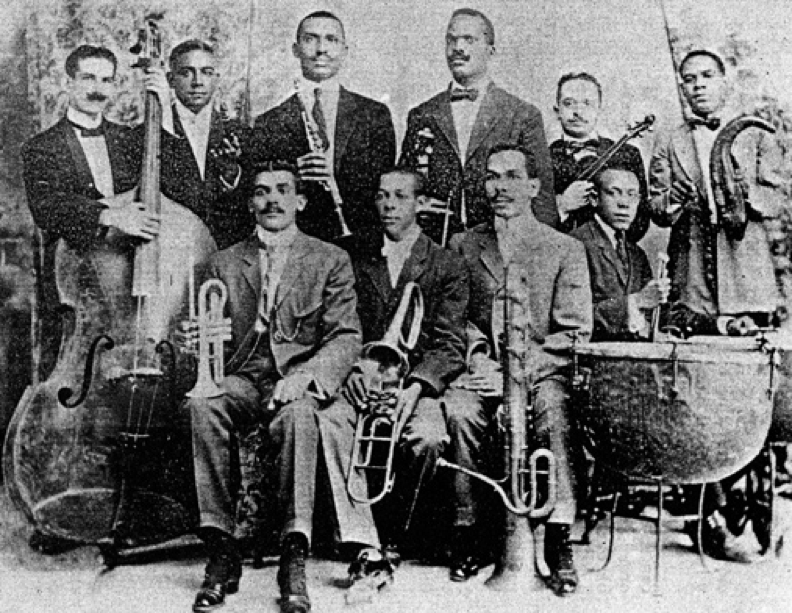
Source: Orquesta Enrique Peña circa 1908

Source: Orquesta de Antonio Maria Romeu circa 1920
The first image is a good example of a late orquesta tipica and is very brass heavy. There is only one violin and the percussion section consists of the cumbersome, low pitched timpani and a guiro.
The second image is a charanga ensemble consisting of more violins, no brass and a larger percussion section featuring clave and the more modern, higher pitched timbales (third from right).
The Danzón-Mambo
Before we discuss cha-cha-chá itself, there is one other important musical development that must be discussed, namely the Cuban mambo. The word mambo can be confusing as it encompasses a multitude of different things. It is 1. a style of music (which developed uniquely in Cuba, Mexico, and New York over different periods), 2. a rhythm which is played by a cowbell in a section of the same name in a salsa song, as well as 3. a melodic line played by brass instruments. The type of mambo to which we are referring now is specifically the Cuban mambo, a style of music developed by Israel “Cachao” López in the 1930s. Cachao spent much of the 30s playing danzón music with Antonio Arcaño and his charanga Arcaño y sus Maravillas and it was in this band that Cachao started composing danzón-mambo songs. These songs effectively started as danzón, but had a contrasting final section which placed a greater emphasis on traditional Afro-Cuban rhythms and syncopated melodic phrases. This final section was known as the mambo and would eventually become a style in it’s own right.
Learn with LPM
The Emergence of Cha-cha-chá
The dawn of the charanga ensemble and the popularity of danzón-mambo music meant that all the necessary factors for the creation cha-cha-chá were ready. However, it’s the musicians themselves that create music, not instruments, and there was one figure who played an especially important role in the emergence of this new exciting style - his name was Enrique Jorrín.
Enrique Jorrín was a violinist and composer who started developing cha-cha-chá music in the 1950s, prior to this he (like the López brothers) had worked in Arcaño y sus Maravillas where he played danzón and danzón-mambo music. However, it wasn’t until he started working with Orquesta America that he started composing cha-cha-chá songs. Jorrín noticed that the syncopated nature of mambo montunos and rhythms meant dancers often struggled to follow the band. He began composing music that had more simple rhythmic content to aid the dancers and this music became known as cha-cha-chá -- an onomatopoeia that’s supposed to imitate the sound of dancers feet sliding along the dance floor. An early example of such a composition is a song called La Engañadora. When we analyse this song, we notice that the percussion (lead by the driving cowbell) is largely unsyncopated, the melodies (both in the flute and the violin and vocal lines) usually resolve on strong downbeats, in fact the only instrument that plays a largely syncopated part is the guitar, or piano, in some versions of the song. This rhythmic simplicity meant that cha-cha-chá was easier for non-Latin audiences to appreciate, which led to it’s huge popularity firstly in the United States, and then further afield.
Final Thoughts
In our next article we will explore cha-cha-chá from a musical perspective. We’ll analyse the typical parts played by the rhythm section before exploring percussion parts and considering how we can approximate these rhythms and timbres on the drum kit. Before reading said article, it’s advised to read through the below list of important figures and listen to their songs to familiarise yourself with how cha-cha-chá music sounds. You can practice as much as you like, but unless you’re listening to the music itself you have no reference to how it should sound.
Key Figures and Bands
Here are some of the most influential musicians in the creation and development of cha-cha-chá, as well as some of their key works. This list should serve as a listening list for those of you wanting to build a repertoire of cha-cha-chá music. It’s easier than ever before to find music these days and all of these musicians can be found on Spotify and YouTube.
Miguel Faílde (1852-1921) - musician and bandleader who composed one of the first danzónes “Las Alturas de Simpson.”
Antonio Arcaño Betancourt (1911-1994) - flautist, bandleader, and prolific danzón composer. Arcaño led his own charanga band Arcaño y sus Maravillas in the 1930s and worked with the López brothers, Orestes and Israel (more commonly known by his nickname “Cachao”). Notable songs include “Soy el Matancero.”
Enrique Jorrín (1926-1987) - violinist and composer credited as the creator of cha-cha-chá. Jorrín’s important compositions include “La Engañadora” and “El Túnel.”
Israel “Cachao” López (1918-2008) - bassist and composer who was a leading figure in the development of mambo music. Worked with Antonio Arcaño in his charanga and there began fusing danzón music with mambo, his own creation, to create danzón-mambo.
Richard Egües (1923-2006) - flautist, composer, and member of Orquesta Aragón. Egües composed a number of cha-cha-chá songs which have become standards within the style. Such songs include “El Bodeguero” and “La Cantina.”
Rosendo Ruiz Jr. (1918-2009) - Ruiz Jr. was a prolific composer whose most well known songs include Rico Vacilón and Los Marcianos.
Orestes Lopez (1908-1991) - brother of Israel “Cachao” Lopez. Cellist and composer who co-wrote a number of danzón-mambo tunes with his brother.
Enrique Peña (1880-1922) - Cuban cornet player and band leader. Peña’s orquestra was a good example of an orquesta tipica, the precursor to the charanga.
Antonio Maria Romeu (1876-1955) - Cuban pianist, composer, and bandleader. Romeu led his own band which is an example of an early charanga ensemble.
Orquesta America - the band in which Jorrín played when he began composing cha-cha-chá songs throughout the 1950s.
Orquesta Aragón - perhaps the most influential and longest running of Cuba’s charanga bands.
About the Author: Brendan Bache
Brendan has been in love with the drum kit since the age of 8. His love for music spans many musical genres but his great passion is the study and performance Latin American music. This interest has led Brendan to study many Latin percussion instruments such as congas and bongos as well applying these rhythms to the drum kit. Brendan is the drum kit teacher at Liberty Park Music. Check out his drum kit courses!

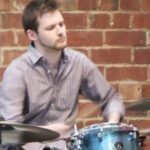
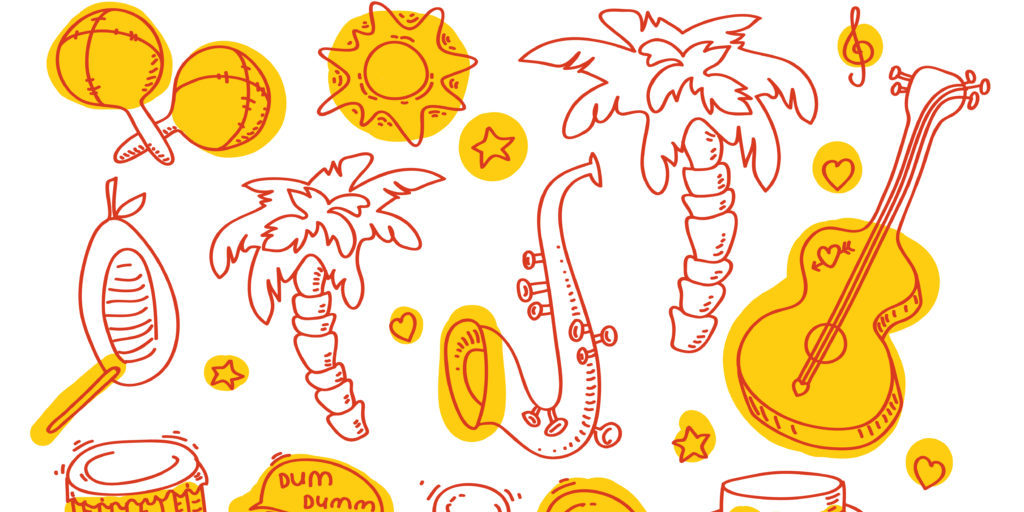

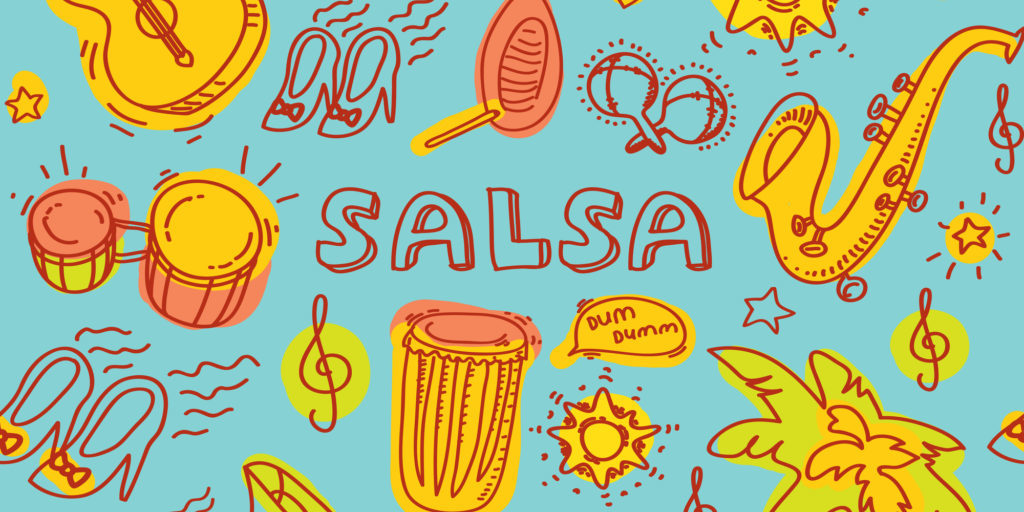
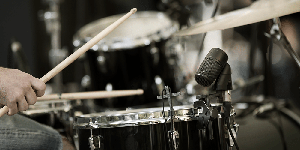
thanks for the lesson, just learned my first cha cha beat…..so bored of rock music. Saw Shelia E. live a few years back…she’s my inspiration 🙂